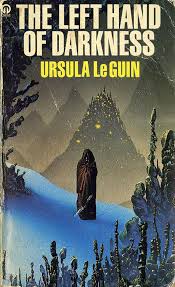Resource Archive
 posted on 16 Nov 2015
posted on 16 Nov 2015
Towards a genderless society: Androgyny in late 20th century fiction by Jane Allcroft
This dissertation will look at the concept of androgyny and the form this takes in contemporary novels, focusing on four different works of fiction taken from the late 1960s to early 2000s. A brief overview of the development of the idea of androgyny within literary texts from early creation mythology, through Plato to the fiction of the modernists provides contextual background to understanding current representations. Concepts of androgyny within contemporaneous literary and social theory will also contextualise the fictional representations, looking at how they both draw on and reflect theoretical concepts and social discourses.
Androgyny will be shown to be an archetype which takes on various forms depending on the social circumstances in which it emerges. The forms in which androgyny is manifested in the four novels under consideration here will be seen to range from the embodiment of both maleness and femaleness in futuristic androgynous humans in Ursula LeGuin’s The Left Hand of Darkness (1969), the earliest novel analysed here, through to poststructuralist genderless and intersexed narrators in the two later novels, Jeanette Winterson’s Written on the Body (1992) and Jeffrey Eugenides’ Middlesex (2002). The dissertation will look at how this is achieved within the novels through a consideration of plot, narrative and textual analysis.
Concepts of androgyny will be shown to be bound up with destabilizing the categorization of people via gender and sexuality in its ultimate aim to become obsolete as a referent in a post-gender society. Androgyny’s ability to bring this about can be seen to lie in its fluid and multidimensional nature.
androgyny_in_late_twentieth_century_.pdf